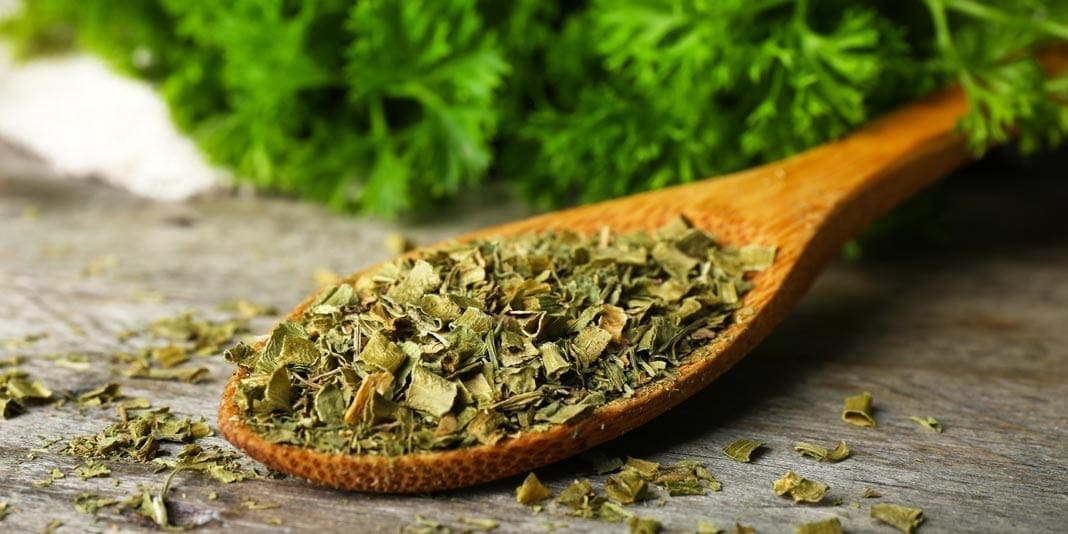In an ideal world, we could all have an herb garden on our windowsills or in our backyards to meet our culinary needs. But not everyone has a green thumb, and sometimes it’s just not practical. Dried herbs are a great alternative most of the time, but some dried herbs are no substitute for their fresh counterparts.
Of course, fresh herbs, especially when cut or at the end of their growing season, don’t keep for very long. Fresh herbs that you intend to use within a week should be treated similarly to fresh flowers: remove any packaging, binding, or ties and place them upright in a stable container of water in the refrigerator. Whether you grow your own or buy the cut herb, any excess or leftovers can also be chopped and frozen in ice cube trays with either water or olive oil to preserve the benefits of their fresh flavor.
Basil
Basil is probably the first herb that comes to mind where fresh is better than dried. Dried basil, frankly, tastes like nothing and is a complete waste of money. Fresh basil, on the other hand, is so fragrant that you barely have to brush your hand against it to appreciate its aroma, and it lends all kinds of flavor to sauces, salads, stir-fries, and more. Basil is fairly easy to grow, and many produce departments carry potted basil plants to make this even easier. If gardening isn’t for you, though, fresh cut basil is also on offer at most supermarkets.
Cilantro
Cilantro (the leafy green plant sometimes also called coriander) retains some flavor when dried, but is at its most fragrant and flavorful when fresh. Cilantro grows easily, but the life cycle of an individual plant is short, so keeping a constant supply on hand can require some extra attention. The good news is that fresh cut cilantro is inexpensive–usually less than $1 for a good-sized bunch–and if stored properly, will keep in the refrigerator for several weeks.
Parsley
There are plenty of good uses for dried parsley, but it hardly ever should be used as a substitute when a recipe calls for fresh parsley. Fresh parsley is comparable to a strongly-flavored salad green, and is often used in this way, especially in Middle Eastern and North African dishes. Parsley, like cilantro, is inexpensive to purchase in its fresh cut form, and it is also perhaps the easiest herb on this list to grow. It grows fairly quickly, has a long growing cycle, and it has an excellent yield, especially if you can plant it in the ground. Fresh parsley is also reportedly helpful for digestion, and chewing fresh parsley after a meal can help fight bad breath from aromatic foods like garlic and onions.
Ready to start your own indoor herb garden? There are a lot of excellent starter packs that come with everything you need. Check out 9 Herb Window Garden – Indoor Organic Herb Growing Kit which offers a vast variety of herbs, including the three above. Perfect for the casual cook!




































